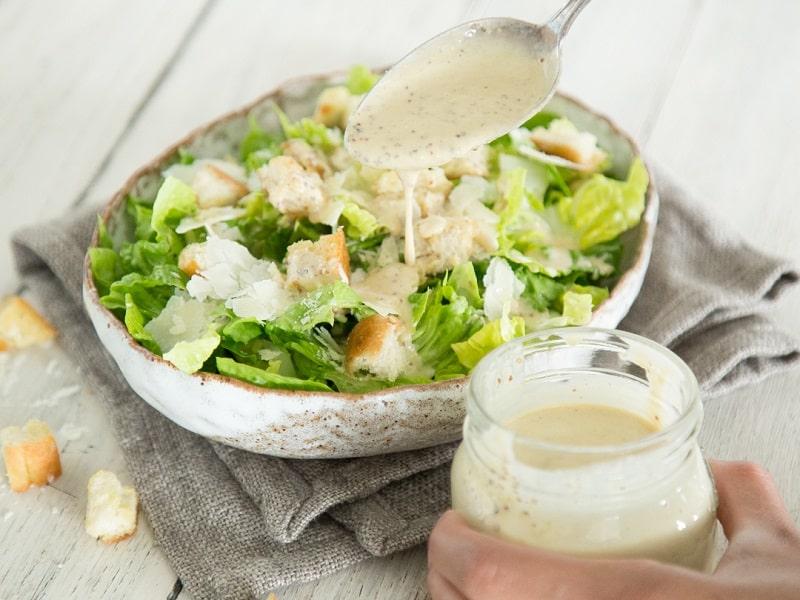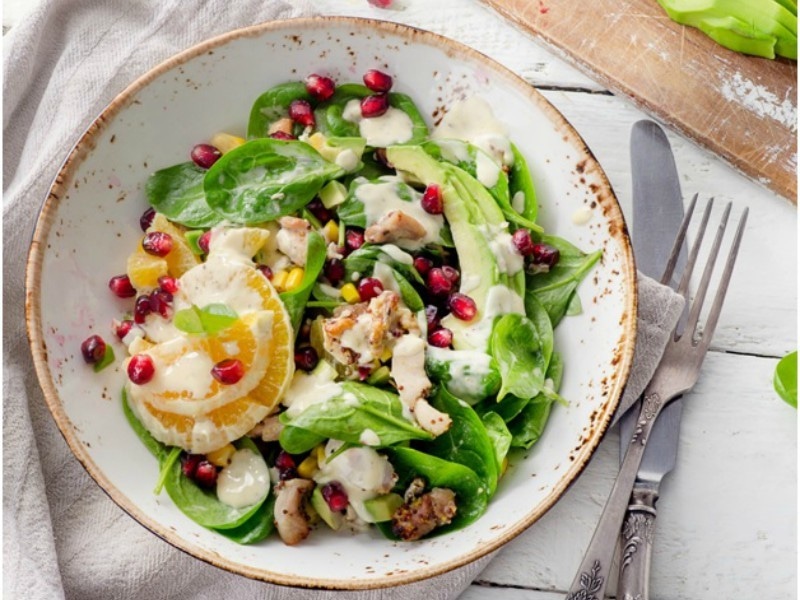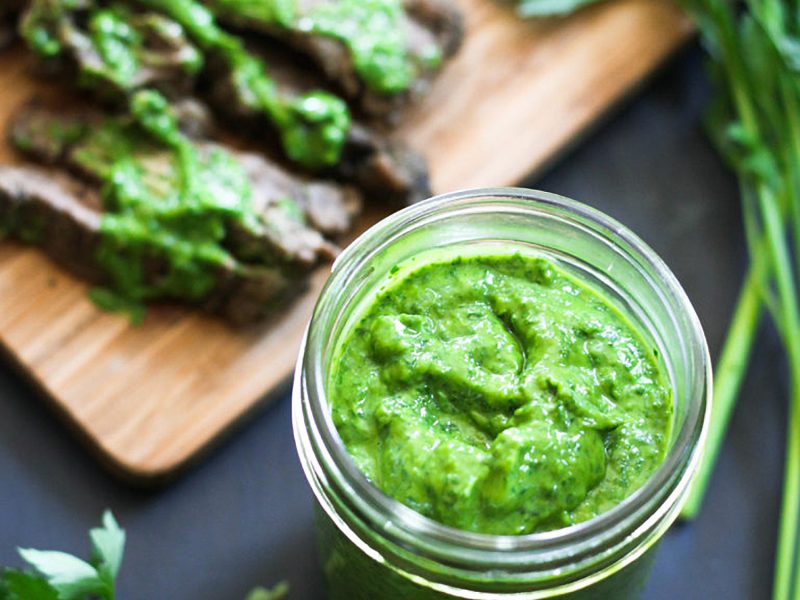Choosing Healthy Salad Dressings for Effective Weight Loss
Introduction
Salads are often seen as a go-to meal for those looking to shed some pounds due to their low-calorie nature and high nutrient content. However, it’s essential to pay attention to the type of dressing you use, as it can significantly impact the overall healthiness and weight loss potential of your salad. In this article, we will explore the importance of selecting healthy salad dressings for weight loss and provide some delicious options that you can incorporate into your daily diet.
Understanding the Importance of Salad Dressings for Weight Loss
1. Calories and Portion Control:
One of the primary considerations for weight loss is calorie intake. Salad dressings can be deceivingly high in calories and unhealthy fats, often overshadowing the benefits of eating a salad. Controlling portion sizes and choosing dressings with lower calorie content are vital for achieving and maintaining weight loss.
2. Nutrient Absorption:
While salads themselves are incredibly nutritious, consuming them with minimal or no dressing can hinder the absorption of fat-soluble vitamins such as vitamin A, D, E, and K. Adding healthy dressings not only enhances the flavor but also aids in better nutrient absorption, making your salad more wholesome and satisfying.
3. Sustainability and Satisfaction:
Including a tasty dressing makes salads more enjoyable to eat, ultimately increasing the likelihood of sustaining this healthy habit. Many people find it challenging to stick to a diet plan due to taste boredom or feeling unsatisfied. Incorporating varied and flavorful dressings can help overcome these hurdles, ensuring weight loss efforts are more manageable in the long run.
Types of Healthy Salad Dressings

1. Vinaigrette Dressings:
Vinaigrettes are made by blending vinegar with oil, herbs, and other spices. They are often lighter in calories compared to creamy dressings. Opt for dressings with olive oil, which is rich in monounsaturated fats, beneficial for heart health. Experiment with different types of vinegar such as balsamic, apple cider, or red wine vinegar for additional flavor. Adding ingredients like Dijon mustard, honey, or fresh herbs can enhance the taste without compromising on health.
2. Greek Yogurt-Based Dressings:
Greek yogurt is an excellent base for creamy salad dressings. It provides a creamy texture and adds protein to your meal, keeping you satiated for longer. Combine Greek yogurt with herbs, lemon juice, garlic, and spices like cumin or paprika for a flavorful, low-calorie dressing.
3. Citrus-Based Dressings:
Citrus fruits like lemon, lime, and oranges bring a burst of flavor to any salad. Mix freshly squeezed citrus juice with a drizzle of olive oil and your choice of herbs or spices. These dressings are light, refreshing, and low in calories, making them an excellent option for weight-conscious individuals.
4. Nut-Based Dressings:
Including nuts in your dressing provides a good source of healthy fats and adds a velvety texture to your salad. Options like almond or cashew butter can be combined with vinegar, lemon juice, or soy sauce to create a creamy and nutritious dressing. Remember to use these dressings in moderation, as nuts are calorie-dense.
5. Herb Infused Dressings:
Fresh herbs such as basil, cilantro, mint, or parsley can elevate the flavor of your salad dressing. Blending them with a base of vinegar, oil, and spices creates a healthy and aromatic dressing that complements a wide range of salads.
Tips for Incorporating Healthy Dressings Into Your Diet
– Read and compare nutrition labels to choose lower-calorie dressings.

– Make your own dressings at home using fresh, natural ingredients to control the quality and calorie content.
– Use dressings sparingly, as even healthy options can add up in calories if consumed excessively.
– Experiment with different flavors and combinations to keep your salads exciting and varied.
– Store dressings in portion-controlled containers to avoid overpouring and excessive calorie consumption.
Conclusion
Salad dressings play a crucial role in making your weight loss journey more enjoyable and sustainable. By choosing healthy options that are low in calories and unhealthy fats, such as vinaigrettes, Greek yogurt-based dressings, citrus-based dressings, nut-based dressings, or herb-infused dressings, you can enhance the taste, nutrient absorption, and satisfaction of your salads. Remember to be mindful of portion sizes and read nutrition labels to ensure you stay within your calorie goals. With the right dressings, you can transform an ordinary salad into a delicious and effective tool for weight loss.I. The Market for Healthy Salad Dressings
The market for healthy salad dressings has seen significant growth in recent years, fueled by the increasing consumer awareness of the importance of nutrition and healthy eating. As more people prioritize weight loss and overall wellness, the demand for nutritious and low-calorie dressings has soared. This trend has not gone unnoticed by businesses in the food industry, leading to a surge in the production and availability of healthier alternatives to traditional high-fat dressings. The market is now filled with a wide variety of options, providing consumers with ample choices to support their weight loss goals.
II. Key Players in the Healthy Salad Dressing Market
Several renowned brands and smaller niche players dominate the healthy salad dressing market. Established brands such as Walden Farms, Bolthouse Farms, Newman’s Own, and Annie’s Homegrown offer a range of low-calorie and organic dressings that cater specifically to health-conscious consumers. These companies focus on using natural ingredients and avoiding additives and preservatives, aligning with the increasing demand for clean label products. Smaller craft brands and local producers also contribute to the market’s diversity by offering unique flavors and specialty dressings.
III. Marketing Strategies for Healthy Salad Dressing Companies
1. Health and Nutrition Claims: Healthy salad dressing companies often leverage health and nutrition claims to attract consumers concerned about weight loss. Highlighting attributes such as low calorie, low fat, sugar-free, or organic can appeal to health-conscious individuals. Companies may also emphasize the use of quality ingredients and the absence of artificial additives or preservatives to capitalize on the shifting consumer preference for natural and clean label products.
2. Branding and Packaging: Eye-catching and informative packaging can make a significant difference in attracting consumers. Companies that utilize clear and concise branding, along with appealing visuals and labeling, can effectively communicate the health benefits and quality of their dressings. This can contribute to building brand recognition and loyalty.

3. Social Media and Influencer Marketing: Utilizing social media platforms to promote healthy salad dressings has proven to be an effective strategy. Companies can partner with influencers or wellness advocates who have a large following and credible reputation within the health and fitness community. These influencers can share recipes, reviews, and endorsement of the product, creating awareness and generating positive word-of-mouth.
4. Sampling and Demonstrations: Offering samples or conducting in-store demonstrations at grocery stores or health fairs can allow consumers to taste the product and see its benefits firsthand. This approach helps build consumer trust and encourages purchase conversion by showcasing the taste and quality of the dressing.
IV. Key Challenges in the Healthy Salad Dressing Industry
Despite the growing demand for healthy salad dressings, the industry faces some challenges that businesses must navigate effectively to succeed. These challenges include:
1. Market Saturation: The market is becoming increasingly crowded, with numerous brands offering similar products. It is crucial for companies to differentiate themselves through innovative flavors, ingredient sourcing, and unique selling propositions to stand out in the saturated market.
2. Price Sensitivity: While consumers are becoming more health-conscious, many are still price-sensitive. Competition among manufacturers can lead to price pressure, forcing companies to find a balance between quality and affordability.
3. Distribution Channels: Many healthy salad dressings are sold in grocery stores, health food stores, and online platforms. Securing distribution channels can be a challenge for smaller or emerging brands, requiring them to develop strategic partnerships or invest in online marketing to reach their target audience effectively.
4. Perception of Taste: Convincing consumers that healthy dressings can be equally delicious as their traditional counterparts can be a hurdle for companies. Overcoming the perception that healthy options compromise on taste is crucial to gaining market acceptance and consumer trust.
V. Future Trends and Opportunities
1. Plant-Based Alternatives: With the increasing popularity of vegan and plant-based diets, there is a growing demand for plant-based salad dressings. Businesses can explore innovative ways to create flavorful and creamy dressings using plant-based ingredients such as nuts, seeds, and legumes.
2. Ethnic and Global Flavors: Incorporating ethnic and global flavors into salad dressings can attract a diverse consumer base. The exploration of flavors from different cuisines can provide unique taste experiences and distinguish brands in the market.
3. Customization and Personalization: Offering customization options, such as allowing consumers to tailor the ingredients and flavors of their dressings, can enhance the overall customer experience. This trend taps into the growing desire for personalized nutrition and caters to individual dietary preferences and restrictions.

4. Online Sales and Subscription Services: The rise in e-commerce and subscription-based services presents an opportunity for healthy salad dressing companies to reach a wider market and build customer loyalty. Providing the convenience of doorstep delivery and regular supply can attract busy individuals looking for healthy meal options.
Conclusion
The healthy salad dressing market presents both opportunities and challenges for businesses aiming to cater to weight-conscious consumers. With strategic marketing, focusing on health and nutrition claims, innovative branding, and utilizing social media platforms, companies can effectively position themselves in the market. Addressing challenges like market saturation and price sensitivity requires differentiation, maintaining competitive pricing, and strong distribution channels. By staying abreast of the evolving trends, such as plant-based options, ethnic flavors, customization, and online sales, companies can tap into new markets and solidify their position in the industry. With the right strategies in place, the future of the healthy salad dressing market looks promising.









